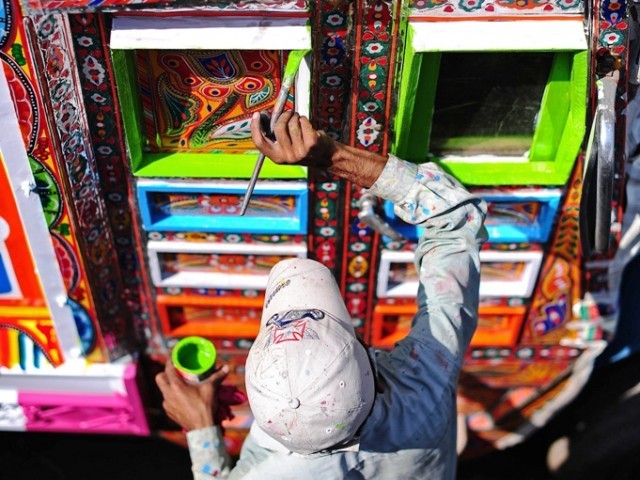
According to Prof Elias, the decoration of each truck involves up to 13 artisans - from the mosaic specialist to the upholstery specialist, bringing the approximate cost of outfitting a single truck to $16,000. Trucks that have been discarded by companies in Japan and Korea are often brought to Pakistan to be reconditioned, after which the thirteen professionals get to work on the truck. "There is a lot of collaboration that goes into turning the truck into what we are used to looking at," he said.

"In their societies, truck drivers are holders of high-status jobs. In a country where less than five percent of the households own cars, drivers are respected amongst the service industry," he reasoned.
Though the decoration on trucks may seem random, each part holds a particular significance. There are three to four different aspects of a truck and there are rules that govern where each decoration goes.
"The front of the truck is the face and often represents the face of the driver or truck owner," he explained. It often has drawings of the Prophet's (pbuh) Mosque in Madinah as well as the Holy Mosque in Makkah. "The front is usually serious - it is the part of the truck that is seen by other truckers at rest stops," he said.
The panels on the side have drawings and often bear the artisan's signatures. The back has satirical poetry and is the "space where the trucking culture interacts with car owners".
He went on to explain that the increase of religious messages on the back of the trucks was an indication of religion permeating within society. What was once a place for social expression is now filled with religious markers, he claimed.
Prof Elias spoke of the "value of objects changing with time" and how religious symbols such as the pair of Chakor partridges, which was traditionally used to ward off the evil eye, has lost its specific value and is now reduced to a pretty bird decorating the side of the truck. The top back of the truck is often reserved for portraiture, often of icons that the truckers can relate to.
The scholar was of the opinion that politicians, today, were more inclined towards sub-nationalism as portraits of politicians with the Pakistani flag had been replaced with their party's flags. "Their self-identity has changed and sub-nationalism has become a better representation of their interests."
Published in The Express Tribune, March 13th, 2014.


























1714024018-0/ModiLara-(1)1714024018-0-270x192.webp)









COMMENTS
Comments are moderated and generally will be posted if they are on-topic and not abusive.
For more information, please see our Comments FAQ